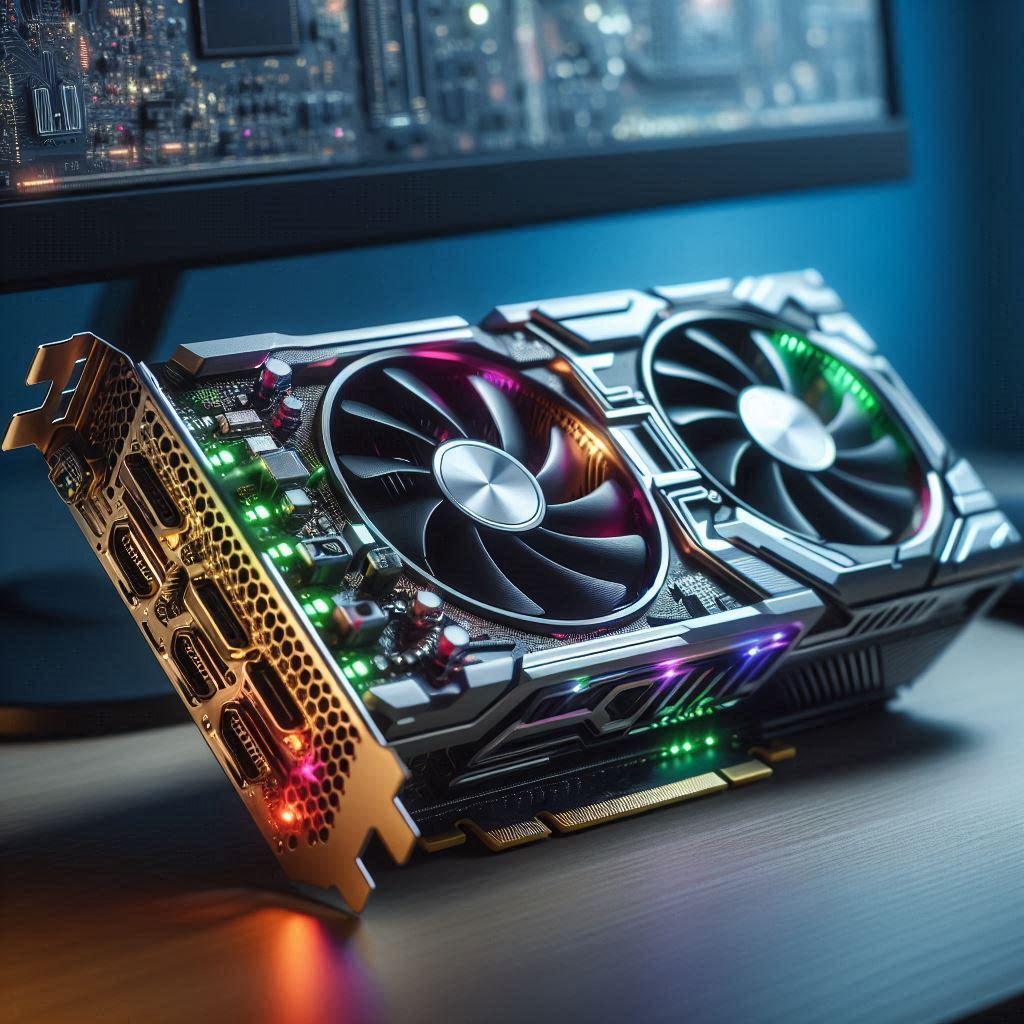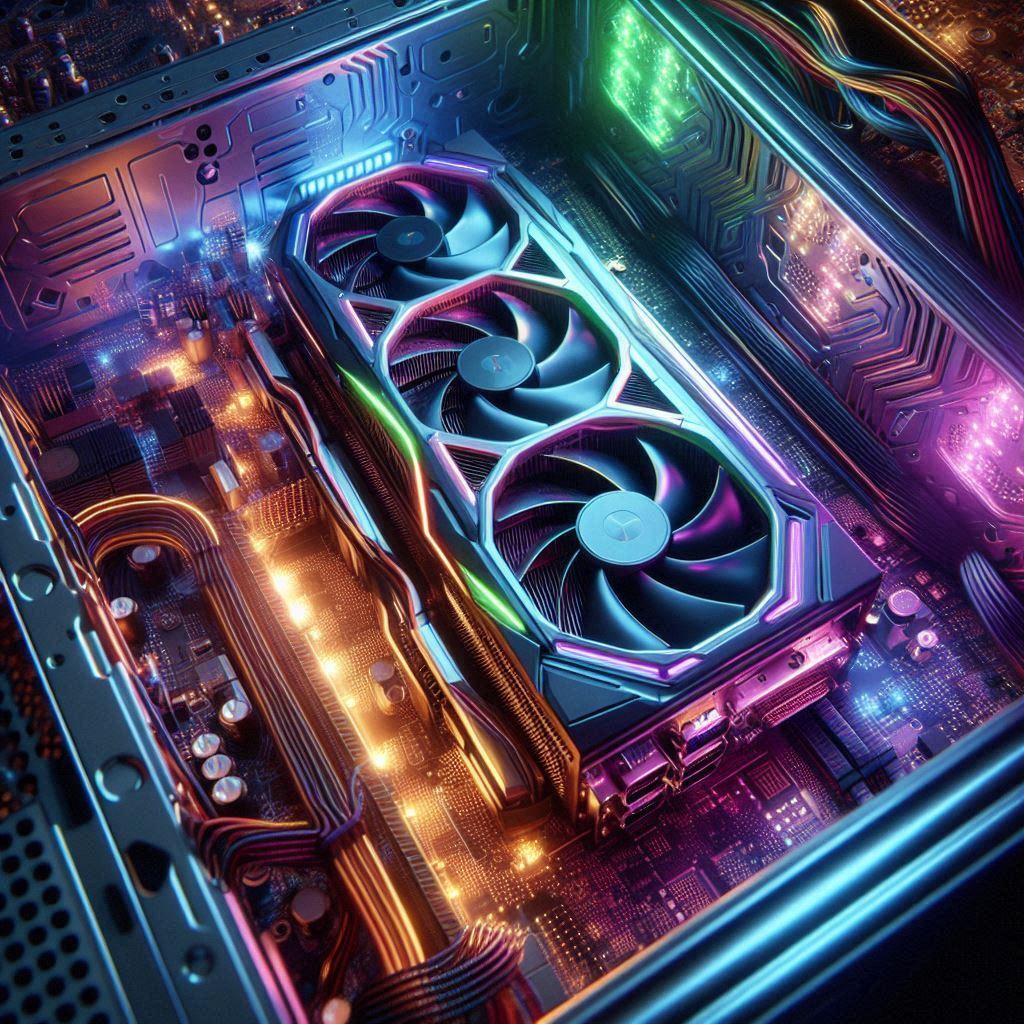MLCC for Graphics Processing Units (GPU)

In the rapidly evolving world of technology, the importance of efficient and reliable components cannot be overstated. Among these, the Graphics Processing Unit (GPU) stands out as a critical component in modern computing, driving advancements in gaming, professional visualization, and high-performance computing. At the heart of the GPU’s functionality is a myriad of smaller, yet essential components, one of which is the Multilayer Ceramic Capacitor (MLCC).
MLCCs are pivotal in the performance and reliability of GPUs, ensuring stable power delivery, reducing noise, and enhancing overall system efficiency. In this blog, we will delve into the role of MLCCs in GPUs, exploring their structure, function, and the significant impact they have on GPU performance.

What is an MLCC?
MLCC, or Multilayer Ceramic Capacitor, is a type of capacitor that consists of multiple layers of ceramic dielectric material interleaved with metal electrodes. These capacitors are known for their small size, high capacitance, and excellent performance characteristics. They are widely used in various electronic devices due to their ability to store and release energy efficiently, filter signals, and stabilize power supply.
The structure of an MLCC involves alternating layers of ceramic and metal, which are stacked together and then sintered to form a solid, monolithic component. The ceramic material acts as the dielectric, while the metal layers serve as the electrodes. This multilayer construction allows MLCCs to achieve high capacitance values in a compact form factor, making them ideal for applications where space is limited.
Types of MLCCs
MLCCs come in various types, each designed to meet specific performance requirements. The two main types are:
- Class I MLCCs: These capacitors are known for their stability and precision. They have low dielectric losses and are used in applications where high accuracy and low signal distortion are crucial. Examples include timing circuits and oscillators.
- Class II MLCCs: These capacitors offer higher capacitance values but with slightly higher dielectric losses. They are suitable for applications where higher capacitance is needed, such as power supply filtering and decoupling.
The Role of MLCCs in GPUs
In GPUs, MLCCs play several key roles that contribute to the overall performance and reliability of the system. These roles include:
Power Supply Stabilization
One of the primary functions of MLCCs in GPUs is to stabilize the power supply. GPUs require a stable and clean power supply to operate efficiently. Any fluctuations or noise in the power supply can lead to performance issues, crashes, or even hardware damage. MLCCs help to smooth out these fluctuations and provide a stable power source to the GPU.
Decoupling
MLCCs are used to decouple various stages of the GPU circuitry from each other. This means they help to isolate different parts of the circuit, preventing noise and interference from propagating through the system. This decoupling is essential for maintaining signal integrity and ensuring that the GPU operates correctly.
Filtering
MLCCs are also used for filtering purposes in GPUs. They can filter out unwanted high-frequency noise from the power supply, ensuring that only clean power reaches the GPU components. This filtering capability is crucial for maintaining the performance and longevity of the GPU.
Energy Storage
MLCCs store energy and release it when needed. This capability is particularly important in GPUs during high load conditions, such as intensive gaming or rendering tasks. The stored energy helps to maintain stable operation and prevent voltage drops that could affect performance.
Advantages of Using MLCCs in GPUs
The use of MLCCs in GPUs offers several advantages that contribute to the overall efficiency and reliability of the system. These advantages include:
High Capacitance in a Small Form Factor
MLCCs provide high capacitance values in a small package, which is essential for the compact and densely packed PCBs of modern GPUs. This high capacitance allows for effective power stabilization and filtering without taking up much space.
Low Equivalent Series Resistance (ESR)
MLCCs have low ESR, meaning they can efficiently handle high-frequency currents. This low resistance is crucial for maintaining stable power supply and reducing heat generation in the GPU.
Reliability and Longevity
MLCCs are known for their reliability and long operational life. They can withstand high temperatures and mechanical stress, making them suitable for the demanding environment of a GPU. This reliability ensures that the GPU remains functional over extended periods of intense use.
Challenges and Considerations
While MLCCs offer numerous benefits, there are also some challenges and considerations to keep in mind when integrating them into GPU designs.
Microcracking
One potential issue with MLCCs is microcracking, which can occur due to mechanical stress during manufacturing or operation. These microcracks can affect the performance and reliability of the capacitor. Manufacturers must take care to minimize stress and use appropriate handling techniques to prevent microcracking.
Temperature Stability
While MLCCs are generally stable, their capacitance can vary with temperature. This temperature dependency must be considered in the design process to ensure consistent performance across a range of operating conditions.
Availability and Cost
The demand for MLCCs has increased significantly, leading to supply chain challenges and increased costs. Manufacturers need to plan their sourcing and inventory management carefully to avoid production delays and cost overruns.

Future Trends in MLCCs for GPUs
The technology behind MLCCs is continually evolving, driven by the need for higher performance, reliability, and cost-effectiveness. Some future trends in MLCCs for GPUs include:
Higher Capacitance Values
As GPU performance continues to increase, the demand for higher capacitance values in MLCCs will grow. Advances in materials and manufacturing techniques will enable the production of MLCCs with even higher capacitance in the same or smaller form factors.
Improved Temperature Stability
Future MLCCs will likely offer better temperature stability, ensuring consistent performance across a wider range of operating conditions. This improvement will be particularly important for high-performance GPUs used in demanding applications such as AI and machine learning.
Enhanced Reliability
Ongoing research and development will lead to MLCCs with enhanced reliability, reducing the risk of failure due to microcracking or other issues. This increased reliability will be critical for maintaining the performance and longevity of next-generation GPUs.
Conclusion
MLCCs play a vital role in the performance and reliability of Graphics Processing Units. Their ability to stabilize power supply, filter noise, and store energy makes them indispensable components in modern GPUs. As technology advances, the demand for higher performance and reliability in GPUs will drive further innovation in MLCCs.
By understanding the importance of MLCCs and staying abreast of the latest developments, manufacturers and designers can ensure that their GPUs remain at the forefront of performance and efficiency, meeting the needs of gamers, professionals, and researchers alike.
